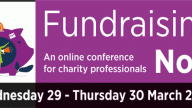Top tips for developing a digital content marketing strategy
Nick Day, Associate Trainer at DSC gives us his five top tips for developing a digital marketing strategy.
Step 1: Where are you now?
This is the critical first step! If you don’t really know what is currently working well and what is not, then it can all seem very daunting. Look at all your content assets across all the different platforms; critically evaluate them and build your own content SWOT analysis that defines your content marketing Strengths, Weaknesses, Opportunities and Threats. Consider the quality of the content itself, the delivery channels used, and the engagement performance achieved.
Step 2: Know your audience
No organisation has perfect customer insight, but you can use what you do know to build a persona for each of your key target supporter segments. A persona is a fictitious composite of a typical individual (or organisation) that represents key characteristics and behaviours. It includes demographic information along with likes and dislikes, preferred communication channels, things they want to achieve and so on. There are lots of templates online – look at a few samples and you’ll soon be able to start building these. Having personas in place will help you to be more in the mindset of the audience when you are developing content.
Step 3: Map your donor or supporter journey
The content needed at key journey touchpoints changes. RACE (Reach, Act, Convert, Engage) is a great basic journey model to use for this if you don’t already have your own one in place. Map your content to the journey each persona may follow and consider how well the content adds value at key touchpoints. Where are the gaps that need to be filled?
Step 4: Set clear goals
Now you’ve mapped your customer journey to your content, really start to think about you want to achieve with each communication channel at each key touchpoint. PR Smith’s 5S model is perfect for this as it encourages you to define clear goals:
- Sell: This is about income growth targets. For example, at the conversion stage, what average donation are you seeking?
- Serve: This focuses on adding value. What are the benefits you can provide back to supporters? How can these be best presented?
- Speak: This is about getting closer to supporters. What content types are they most likely to enjoy and engage with?
- Save: This can be about saving time or money. Easy online processes save time and enable donations to be achieved at point of maximum emotional engagement.
- Sizzle: This is about creating excitement. On and offline events can really build support and generate positive publicity for your organisation.
Step 5: Build your content
Now you’ve defined your personas, mapped the supporter journeys and set some clear goals, you can start building a content schedule. Dave Chaffey’s Content Marketing Matrix can really help here. This will help you to get an effective balance of content that considers both the rational and emotional connections that need to be achieved in the context of moving the supporter from awareness through to conversion. You can then build a clear content map for each persona that defines for each stage of the journey:
- The opportunity or problem to be solved
- The goal or objective you want to achieve
- The communication channels to be used
- The key performance indicators, such as shares, likes, follows etc.
Want to know more? Nick Day runs a training Fundraising with Digital Marketing training course, the next dates are Friday 31 March, Wednesday 7 June and Wednesday 19 July.


